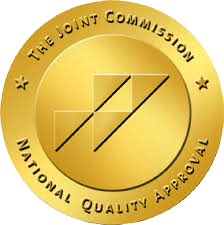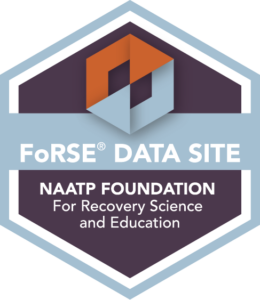Fentanyl is a remarkably potent synthetic opioid that’s often prescribed for severe pain but is also produced and sold illegally. Its extreme potency—it’s more than 50 times stronger than heroin—makes it fiercely addictive and causes dependence to develop quickly. When someone dependent on fentanyl stops using the drug, withdrawal symptoms can set in rapidly, making the process physically and emotionally taxing.
This page explores what to expect from fentanyl withdrawal, outlines a typical timeline and symptoms, and shows you how to get effective, science-backed treatment for opioid addiction.
What is Fentanyl Withdrawal?
Fentanyl withdrawal is the body’s reaction to the absence of the drug after developing dependence. Fentanyl changes brain chemistry over time, making the body rely on it for normal functioning. When the drug is removed, withdrawal symptoms manifest as the brain and body attempt to recalibrate.
Withdrawal from opioids like fentanyl can be incredibly uncomfortable and potentially dangerous. This is why medically supervised detox is almost always recommended for those looking to discontinue use. The scope and duration of fentanyl withdrawal varies according to how long the person has been using the drug, their dosage, and their overall physical and mental health.
Fentanyl Withdrawal Symptoms
Withdrawal symptoms from fentanyl appear within 6 to 12 hours of the last use. These symptoms range from mild to severe, with the most extreme effects peaking within a few days of discontinuation.
Early symptoms include:
- Anxiety
- Sweating
- Muscle aches
- Runny nose
- Insomnia
- Increased heart rate
Peak symptoms include:
- Nausea
- Vomiting
- Diarrhea
- Body aches
- Dilated pupils
- Goosebumps
- Chills
- Fever
Lingering symptoms might include:
- Fatigue
- Depression
- Intense cravings
- Sleep disturbances
Although people experience fentanyl withdrawal differently, it’s most commonly described as similar to severe flu with additional psychological distress. The process itself is not normally life-threatening, but dehydration may provoke complications. Attempting to quit without professional help also makes relapse more likely due to the overpowering nature of fentanyl cravings.
How Long Does Fentanyl Withdrawal Last?
The fentanyl withdrawal timeline depends on the person’s dosage, usage history, and health status. The most intense symptoms manifest in the first few days of detox, with lingering effects persisting for weeks or months.
Fentanyl withdrawal timeline
- 6 to 12 hours: Early symptoms set in, including sweating, anxiety, and muscle pain.
- Days 1 to 3: Symptoms usually peak, with intense nausea, vomiting, and diarrhea causing severe discomfort.
- Days 4 to 7: Physical symptoms subside, but cravings and extreme fatigue remain.
- Week 2 and beyond: Psychological symptoms like cravings and depression may persist for weeks or even months.
Some people encounter PAWS (post-acute withdrawal syndrome), which may include mood swings, anxiety, and sleep issues that last for many months. Ongoing medical help can lessen the impact of PAWS.
Why Medical Detox is Recommended
Fentanyl withdrawal can be severe, making the thought of stopping frightening. Many who attempt detox independently relapse because they find the discomfort becomes unbearable. Medical detox provides a safer and more comfortable pathway to ongoing abstinence.
Benefits of medical detox
- 24-hour medical monitoring to manage dehydration, irregular heartbeat, and other complications.
- Medications to ease withdrawal symptoms, reduce discomfort, and alleviate cravings.
- Emotional support for anxiety and depression.
- A structured setting lowers the risk of relapse during the most challenging early phase of recovery.
In most cases, further treatment following medical detox is required to strengthen the foundation for ongoing recovery.
Medications Used for Fentanyl Withdrawal
Several medications can ease withdrawal symptoms and reduce cravings, making the detox process much more manageable. These include:
- Methadone: This is a long-acting opioid that reduces fentanyl cravings and withdrawal symptoms without delivering an opioid high.
- Buprenorphine: Another FDA-approved medication that streamlines symptoms and mitigates the risk of relapse.
- Naltrexone: Blocks opioid receptors, preventing fentanyl from having an effect if someone relapses.
- Clonidine: Manages sweating, rapid heart rate, and anxiety.
MAT (medication-assisted treatment) can be used both during withdrawal and throughout long-term recovery to help people stay sober.
What Happens After Fentanyl Detox?
Detox is only the first step in overcoming fentanyl addiction. Most people require ongoing treatment to probe the underlying causes of substance use and encourage long-term abstinence.
Common treatment options after detox include:
- Inpatient rehab: A structured, live-in program offering medical and therapeutic support. Inpatient rehab programs last 30 to 90 days and suit those with severe addictions, co-occurring mental health conditions, or unstable home environments.
- Outpatient programs: Outpatient rehab enables people to get treatment while living at home and continuing to meet their everyday commitments. This works best for those with milder addictions or as a step-down from residential treatment.
- Talk therapies: Helps individuals work out what triggers their substance use, create healthy ways to cope, and build healthy, sober lifestyles.
- Peer support groups: Groups such as NA (Narcotics Anonymous) and SMART Recovery provide peer support and accountability.
Comprehensive treatment that blends evidence-based and holistic interventions gives people the tools to stay sober and rebuild their lives from fentanyl abuse.
How to Support a Loved One During Fentanyl Withdrawal
Here are some ways to help if someone you care about is tackling withdrawal from opioids like fentanyl:
- Encourage medical detox: Engaging with professional care dramatically increases the likelihood of a safe and successful withdrawal from fentanyl.
- Be patient: Fentanyl withdrawal is associated with irritability and mood swings. This is part of the process, so be patient and work with your loved one rather than increasing their distress.
- Help with basic needs: Offer healthy meals, hydration, and a quiet, safe resting space.
- Avoid enabling: Don’t give them money or access to fentanyl, even if they ask.
- Stay involved: Support shouldn’t stop after detox ends. Encourage your loved one to continue treatment and remain engaged in their recovery.
Finding Help for Fentanyl Withdrawal Near You
Quitting fentanyl is challenging but far from impossible. We can help you or someone you care about move from active opioid addiction to ongoing sober living at Tree House Recovery.
Our medical detox program streamlines the fentanyl withdrawal process and mitigates complications and relapse. It also serves as a bridge to ongoing outpatient treatment at our beachside facility.
We offer outpatient programs at varying intensity levels to match the severity of your fentanyl addiction and your recovery goals. You’ll join others tackling similar issues and benefit from evidence-based therapies and holistic treatments to promote whole-body recovery from opioid abuse.When you’re ready to reset your life, get immediate assistance by calling (855) 202-2138.






